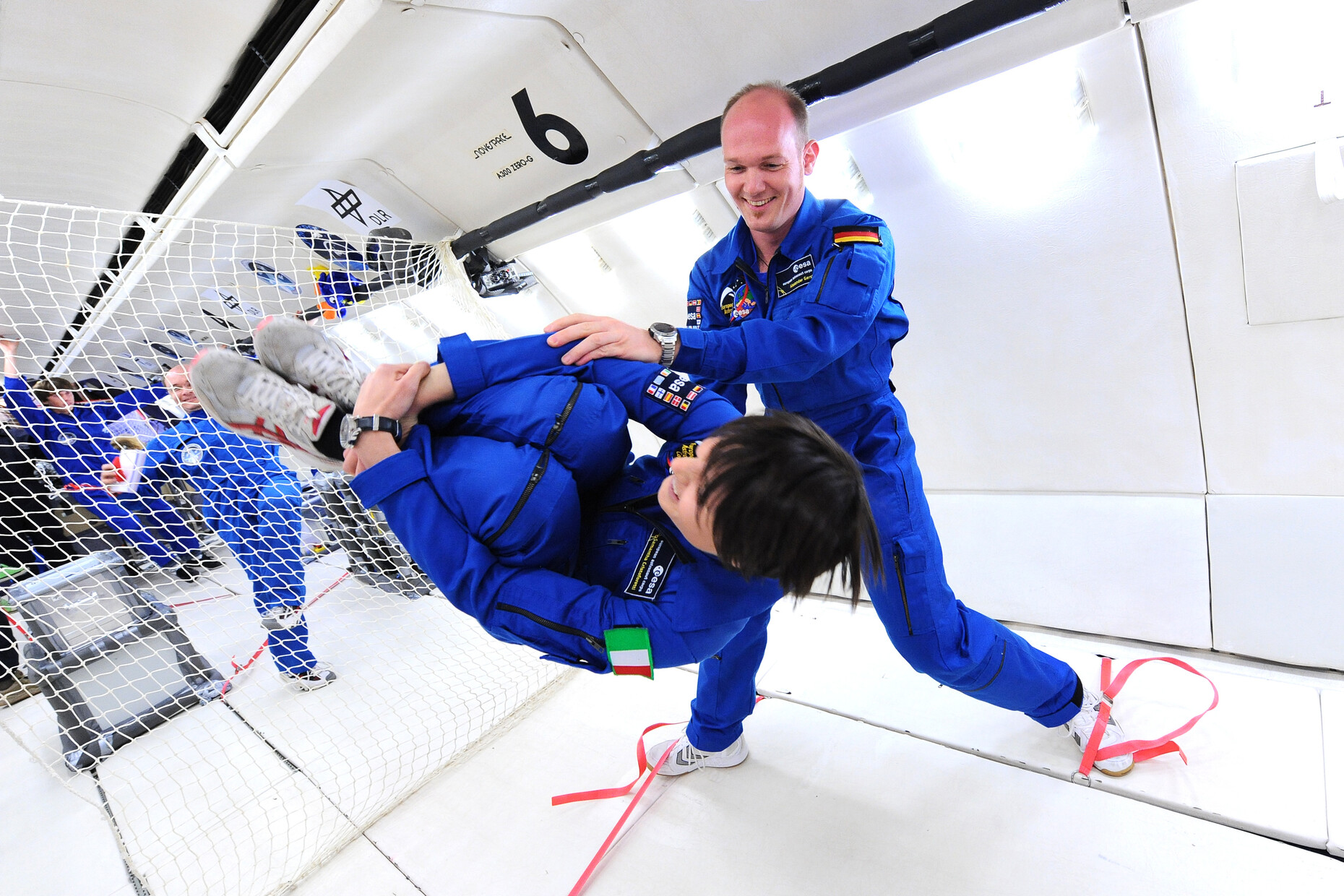Techtextil
When the spacesuit replaces the doctor
Fabian Peters: You are dedicated to developing technical textiles for the aerospace industry. Where are these textiles currently used for aerospace applications? What research into technical textiles is at present being conducted at the ESA?
Arnaud Runge: At ESA, we do not directly develop the textile technologies but we do manage activities that can use smart textiles, for example for medical applications. In the field of medical applications for astronauts, textiles are used so far in two main different ways: as an active system or as a carrier and supporting platform.
As an active system, textile can be used for countermeasure purposes to limit the deleterious effects of weightlessness on the human body, such as muscle and bone loss. An issue for astronaut is microgravity-induce back pain: astronauts can grow by up to 7 cm as their spines lengthen in weightlessness. Back on Earth they need to take care as they exercise their bodies into shape, because after the mission an astronaut has four times more chance of suffering a slipped disc than usual. ESA has therefore supported the development of a concept named Skinsuit, which is a tailor-made overall with a bi-directional weave specially designed to counteract the lack of gravity by squeezing the body from the shoulders to the feet with a similar force to that felt on Earth. Current prototypes are made of spandex although new materials are being examined. Skinsuit was developed by the Kings College London.
The other way of using textile is as a carrier, which will integrate sensors for instance. The overall will take the denomination of “smart garment” or “Intelligent clothing”. This is the case of a project named “LTMS – Long Term Medical Survey” developed by CSEM where textile was used to integrate multiple sensors to monitor a set of physiological parameters of an individual.
Another wearable monitoring technology was developed by Ohmatex and integrated into an exercise suit to be worn by astronauts during training. To gain some further insight into muscular activity 3 garment sensor technologies are combined and integrated within some trousers: EMG sensors will detect muscle activation; NIRS sensors will detect changes in oxygen content in selected muscle groups and Plethysmography sensors will measure limb circumference as an indication of changes in muscle volume. The combined data will then be used to analyze muscle activity and optimize training. The project will also generate new knowledge about fluid shifts in the legs.
What role will textile materials play in future off-Earth settlement projects?
Arnaud Runge: Beyond the medical use, some research and development will certainly be done for new generations of spacesuits, which shall be lightweight but resistant. In addition, the use of inflatable structures for future habitats is envisaged and one can imagine a robust textile to be used for such purposes.
What technical textiles used in the aerospace industry will be fit for use on earth?
Arnaud Runge: Anything developed for space applications is always designed having in mind the possible synergies with terrestrial applications. Medical research in space on bone and muscle loss could help better understanding how to fight against osteoporosis and/or improve rehabilitation processes. Textile technologies used for space exploration could also be used for future habitats on Earth, with as a first utilization, fast and robust structures to support populations living in areas devastated by natural catastrophes.
There are also sometime more exotic projects ESA had, like “Couture in Orbit”. For this undertaking that tries to find links between space and “Haute couture” ESA teamed up with leading fashion schools. This goes beyond the more classical projects we usually do.
Will textile materials be combined with organic materials at some point in the future? If so, what functions will these hybrids have?
Arnaud Runge: This aspect is something that could be studied in the longer term. Preliminary studies have been run. For hygiene purposes for instance or to fight skin inflammation or dehydration, ESA has started investigated the possibility to have substances micro-encapsulated in the textile in view of a progressive / controlled release.
Techtextil - International trade fair for technical textiles and nonwovens
Messe Frankfurt
From May 9 – 12, 2017








